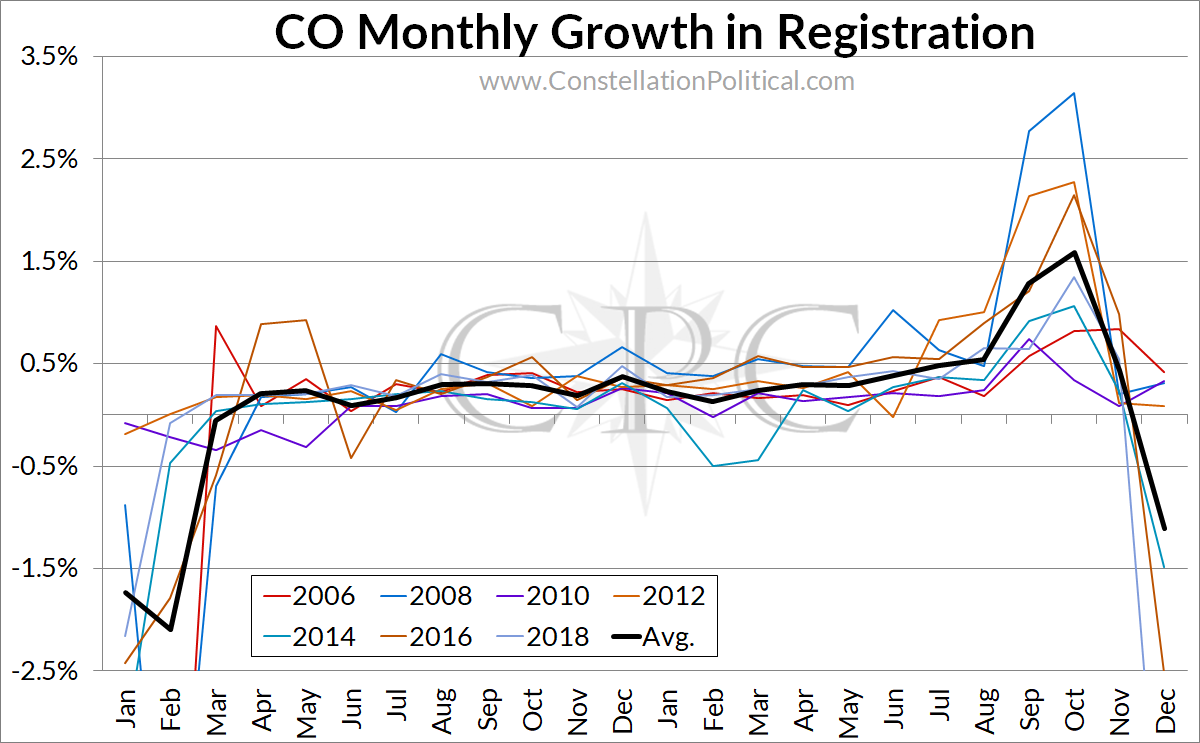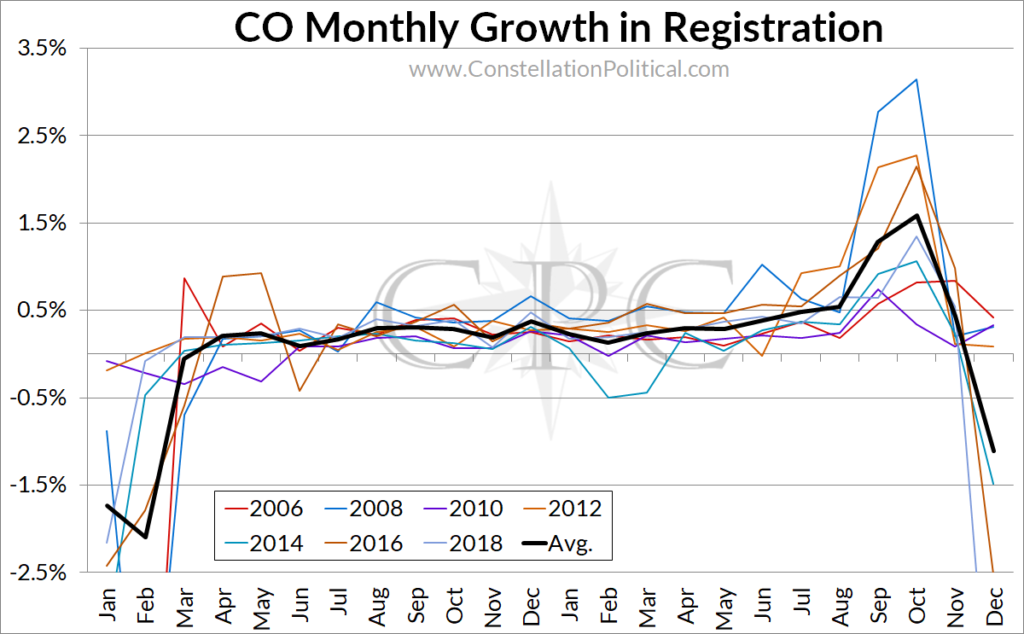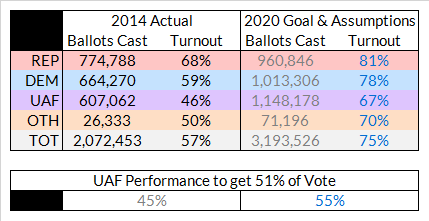 Meaningful Voter Registration Goals
Meaningful Voter Registration Goals
It has come to my attention that some folks think the county-level voter registration goals that I send around at the beginning of each month are just arbitrary. As with everything that I send around, however, there’s quite a bit of math behind them. The short explanation is this: your county goal is the number of new Republican registrations needed for a Republican to win in 2020 assuming that they can perform as well as the Gardner campaign in 2014.
Seasonality
Voter registration, like everything in politics, displays a high level of seasonality. This makes sense because elections happen on a two-year cycle. Yet for some reason, instead of accounting for this when we create goals, we tend to straight-line everything. Unfortunately straight-line goals don’t reflect reality. Consider the below graph:

Graph 1 shows the month-over-month growth of Colorado’s voter registration for the past seven cycles accompanied by the average growth. Registration grows fastest right before the election — shocking I know. In terms of setting goals this illustrates some months are easier to register voters than others.
Were one to set the same voter registration goal for each month of the cycle it is going to be difficult to hit the goal in the early months, and in the later months the goal would undershoot potential.
The straight-line method of goal setting has a further weakness in that it doesn’t account for growth in Democrat registration. If we set out to register 1,000 new Republicans each month at the same time Democrats are adding 2,000 new registrations each month we aren’t going to accomplish anything.
Trend Magnification
To account for the seasonal nature of voter registration growth I take each month’s average growth rate and magnify it by some factor X such that the number of Republican ballots cast in 2020 is sufficient to recreate 2014’s electoral mix. In other words, instead of setting a registration goal of 0.4% growth for every month in the cycle I set a goal that registration growth needs to be 10%, 50%, or 150% greater than the average Republican registration growth for that month.
Magnifying the average growth rate for each month has the effect of equalizing our effort over the course of the cycle while also acknowledging it will be easier to register voters in the October before the election than it will be in July the year before.
How Much Magnification?
How do I decide how much to raise monthly Republican registration growth by? Growth is magnified such that meeting our goals would create the same electoral mix in 2020 as in 2014.
Table 1 shows actual turnout for 2014 as well as my assumptions about what those figures will be in 2020. I use 2014 because it was the last year we won a top-line statewide race. 2014 has the added advantage of being the last year Senator Gardner ran as well.
In 2014 Republican turnout was 8.5 pp higher than Democrat turnout. Given the mix of ballots cast in 2014, for a Republican candidate to garner 51% of the vote statewide they had to get 45% of the Unaffiliated voters to break their way.
Everyone knows that the turnout environment between mid-term and Presidential elections is vastly different. Since 2020 is a Presidential election I assume the various parties will turnout at the same rate they did in the last Presidential election, 2016. I then apply those turnout rates to the registration levels as they will be in November of 2020. This shows that for a Republican candidate to garner 51% of the vote statewide in 2020 they would need 55% of the Unaffiliated voters to break their way, a 10 point deterioration relative to 2014.
From here the question is — “If 81% of Republicans vote in 2020, how many Republicans need to be registered in order for a Republican statewide candidate to win with only 45% of the Unaffiliated vote?” To reach the voter registration goals, I magnify the average monthly Republican registration growth by enough to create enough registered Republicans to satisfy that condition.
Apportionment
Apportioning the statewide voter registration goal to each county is done by their contribution to current statewide Republican registration. If a county currently has 10% of all registered Republicans in the state and our goal is to register 4,000 new Republicans this month that county is given a goal of registered 400 new Republicans.
But Why Are Goals So High?
Easy: because for the past eight years we’ve been resting on our laurels and making no effort to register voters.
Sure, we could make goals lower and more attainable. But if we aren’t going to set goals that will generate electoral success, why even have goals to begin with? We may as well just all move to Wyoming at that point.
